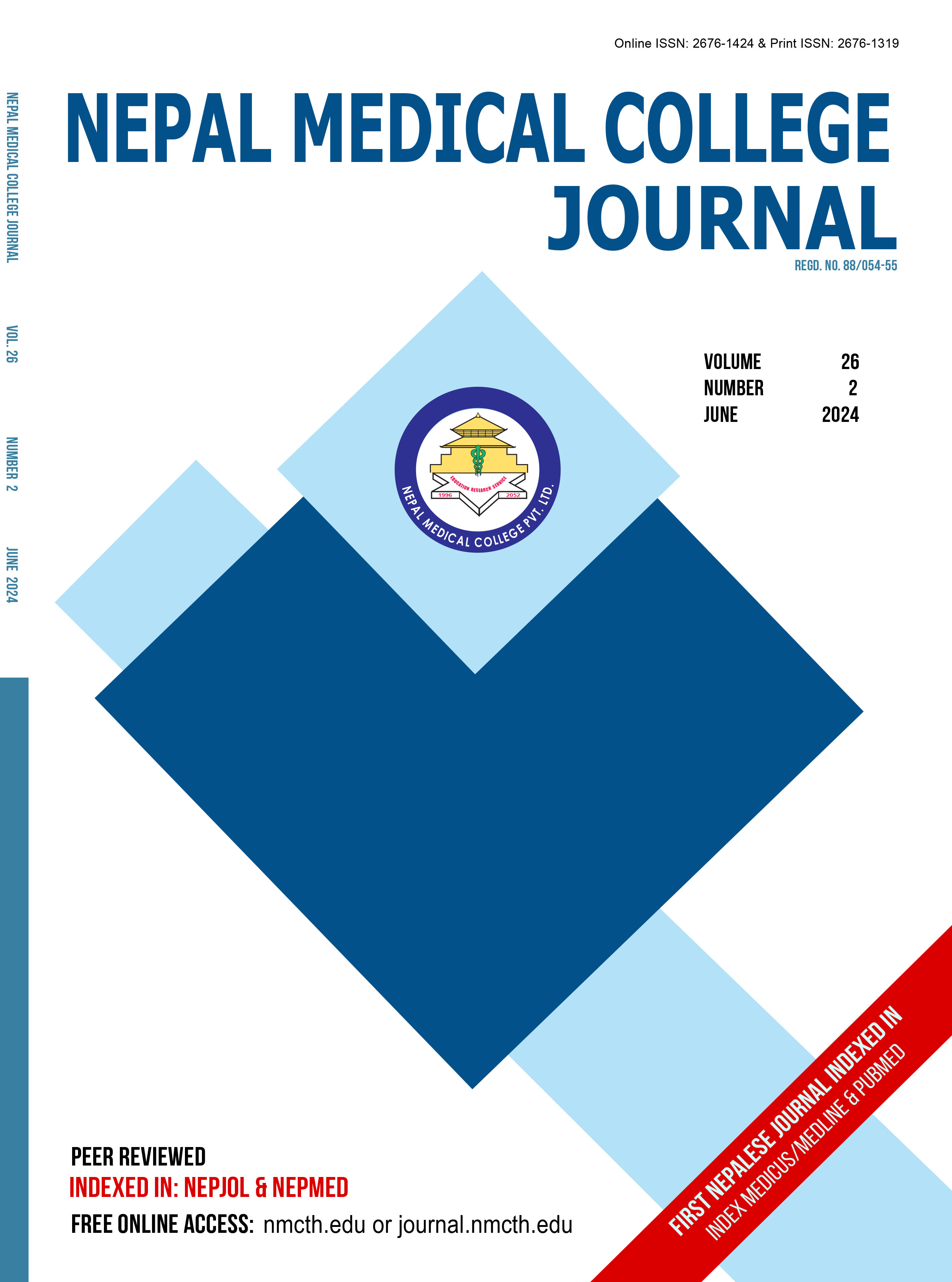Comparison of Collum Angle in Different Skeletal Growth Pattern using Cephalometric Radiographs among Orthodontic Patients in Tertiary Dental Care Center of Kathmandu
DOI:
https://doi.org/10.3126/nmcj.v26i2.67198Keywords:
Collum angle, high angle, low angle, maxillary central incisor, orthodontic treatmentAbstract
Collum angle has been previously studied in different types of sagittal malocclusion but very few studies have focused on vertical malocclusion in our population. Since collum angle is responsible for variation in torque expression, root resorption, fenestration and dehiscence, with prior knowledge of collum angle in high angle and low angle cases, operator can prevent above deleterious effects and accompanied better bracket positioning in future orthodontic treatment. Lateral cephalograms of all the patients of age group 13-30 years attending Department of Orthodontics in Nepal Medical College from October 2023 to March 2024, having clinically harmonious and symmetrical face, full complement of dentition except third molar, minimum crowding were taken. Based on the value of SNMP (Sella-Nasion and Mandipular plane), and Jarabak ratio, the samples were divided into high angle and low angle. Collum angle was drawn and measured in terms of degrees. The data were transferred to SPSS-17 for further analysis. A total of 60 study participants were included in the study with an equal number of male and females. (30 each with age ranging from 13 to 30 years with mean age 19.18±3.89 years) There was an equal distribution of study participants in horizontal and vertical growth patterns (30 each). There was no statistically significant difference in mean collum angle between study participants in horizontal and vertical growth patterns (p = 0.09). No statistically significant difference in mean collum angle between study participants in horizontal and vertical growth patterns in relation to gender was found (Male p = 0.08 and female - p-value 0.55).
Downloads
Downloads
Published
How to Cite
Issue
Section
License
Copyright (c) 2024 Nepal Medical College Journal

This work is licensed under a Creative Commons Attribution 4.0 International License.
This license enables reusers to distribute, remix, adapt, and build upon the material in any medium or format, so long as attribution is given to the creator. The license allows for commercial use.




